Puff pastry takes time to make but trust me it is worth it. Once you have done a batch you can freeze it and use it in a couple of months. It may seem complicated because of the preparation time, you only need to make it once to change your mind. It has literally 3 ingredients (butter, flour and water) so it is cheaper to make it than buy it. Having 3 ingredients means that you know what exactly goes into it and don’t need to buy the ready made ones which contain preservative and all sorts of stuff.
Before you decide to make it, choose a cool day and reserve a relaxing pastry session for yourself. Remember 2 T’s – Time and Temperature.
Time – it may take up to 3 hours to make the pastry.
Temperature – you need a cold temperature so the butter doesn’t melt and your hands need to be cold when working with the dough. Relax and don’t get frustrated, it is all under your control and anyone can do puff pastry, so relax. Enjoy the moment, think about the personal satisfaction and outcome of making your own puff pastry.
Keep a bowl of chilled icy water on the bench to soak you hands in for a couple of minutes to instantly drop the temperature of your hands or wash your hands with cold water. Dry your hand before handling the dough.
History
Puff pastry was so popular during the 18th Century in France, King Loui XVI was fond of Catherine de Medici’s flaky marzipan pastry.
Tips
- Always weigh all your ingredients before starting. This is the number one tip for all pastry products.
- Use strong flour, it has a higher gluten content compared to other flour. The higher gluten content makes the pastry elastic and resistant to the lamination process leading to it rising in the oven.
- Most recipe books will omit on the lemon juice, but it is important to make the dough elastic and easy to stretch out.
- Don’t forget the salt, it is an enhancer of flavour of the dough and any filling you might use to compliment the pastry.
- Brush excess flour between folds, flour will burn quickly in the oven creating burnt specs on the pastry and might prevent it from rising.
- When cutting the pastry use a sharp knife, this will make the cutting process easier and smoother, where there is no need of applying too much pressure hence preventing from pushing the layers that may lead to them sticking together and preventing it from rising in the oven.
- Never ever let egg wash run on the sides of the pastry it will act as a glue and stick all the layers together and guess what this lead to….pastry not rising in the oven. Always remove excess egg wash from your brush by pressing the bristles on the side of egg wash container.
- Depending on the final use of the pastry the ratio Fat to Flour may vary.
Fat:Flour ratio can be 1:1 or 1/4:1 or 1/2:1.
It is very important not to have less than half fat ratio to the flour weight as this will lead to the dough not rising at all as the dough layers will stick together. - Resting the dough between fold and turns is crucial as it firm the butter creating beautiful layer and relax the gluten content making the dough elastic.
- Bake the pastry in oven not less than 220ºC/200ºC.
Chemistry
Puff pastry will rise up to double its size when place in the oven. You may be wondering how this can happen without a leavening agent.
During the lamination process, folding and turning, we create layers of butter between layers of dough.
When we put the pastry in the oven, the water content in the butter will turn into steam, and the steam will rise pushing the layers upwards.
The fat content will melt and cook the layers of dough as they are rising: the layers of dough will hold their shape, they will cook and become crispy and golden brown in colour.
The more you practice the better you get at it, so go ahead and make this flaky, deliciously buttery pastry.
Cheers!
Books I use for reference
Related posts:
Puff pastry
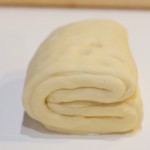
By Published: October 18, 2015
- Yield: 1 Kg
- Prep: 2 hrs 30 mins
- Cook: 30 mins
- Ready In: 3 hrs 0 min
Crispy and flaky classic French puff pastry.
Ingredients
- 500 g Strong Flour sifted, plus more for dusting working surface
- 5 g Salt
- 50 g Butter room temperature and cut in small cubes
- 1 tsp Lemon Juice
- 250 ml Water chilled, more if needed
- 450 g Butter chilled
Instructions
- Sift the flour and salt in a bowl. Add the cubed butter and lightly rub the butter and flour.
Use your touch sense, one trick I learned at college was, not to look your dough while doing this. Look somewhere else and totally rely on your sense. Stop when the mixture resembles breadcrumbs.
- Mix the lemon juice and water. Add this to the butter and flour mixture and knead until the dough is smooth. Less than 5 minutes, if you over knead, the dough will become tough and loose elasticity.
- Shape into a ball and cling wrap. Rest in fridge for 30 minutes.
- Place the 450g of butter between two baking paper sheets or cling wrap. Shape into a square using your hands or the rolling pin.
- Take the dough out of the fridge and cut a cross on the top.
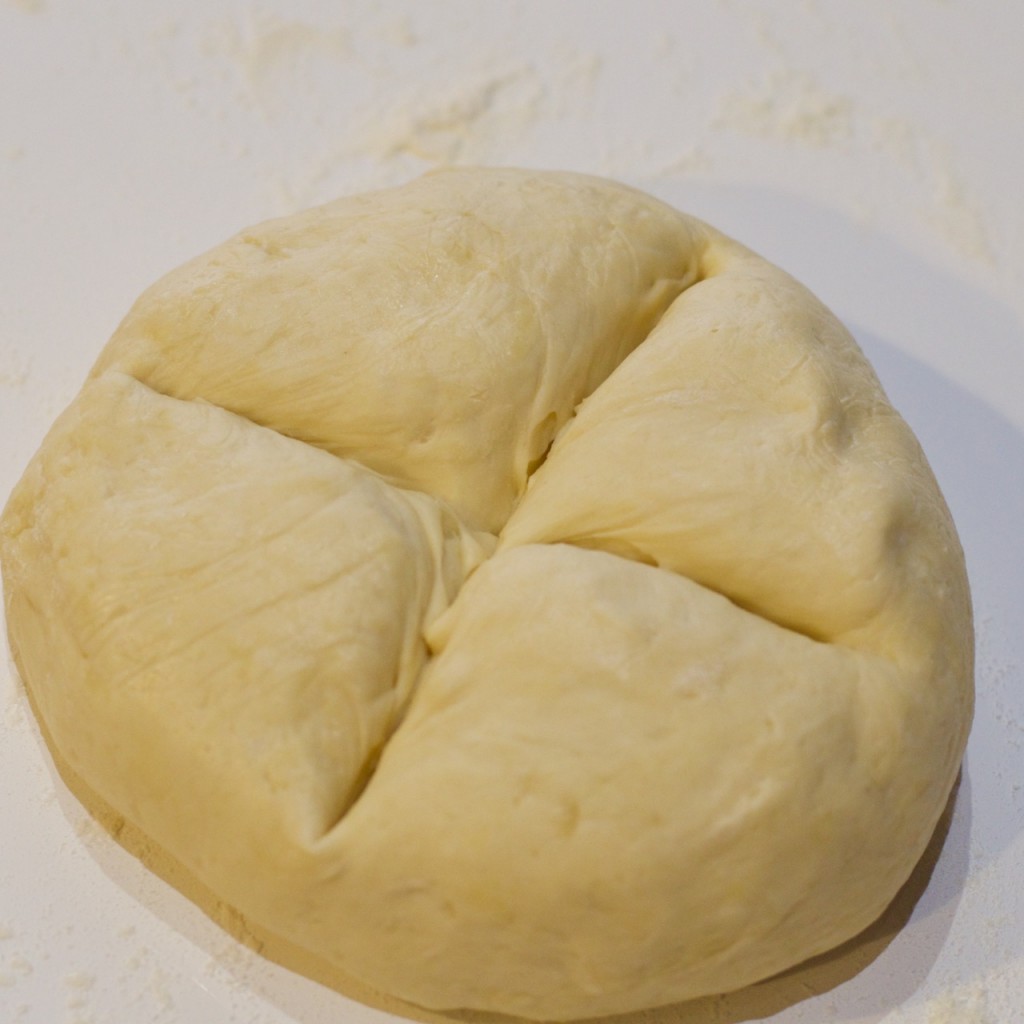
- Roll out the 4 corners outwards.
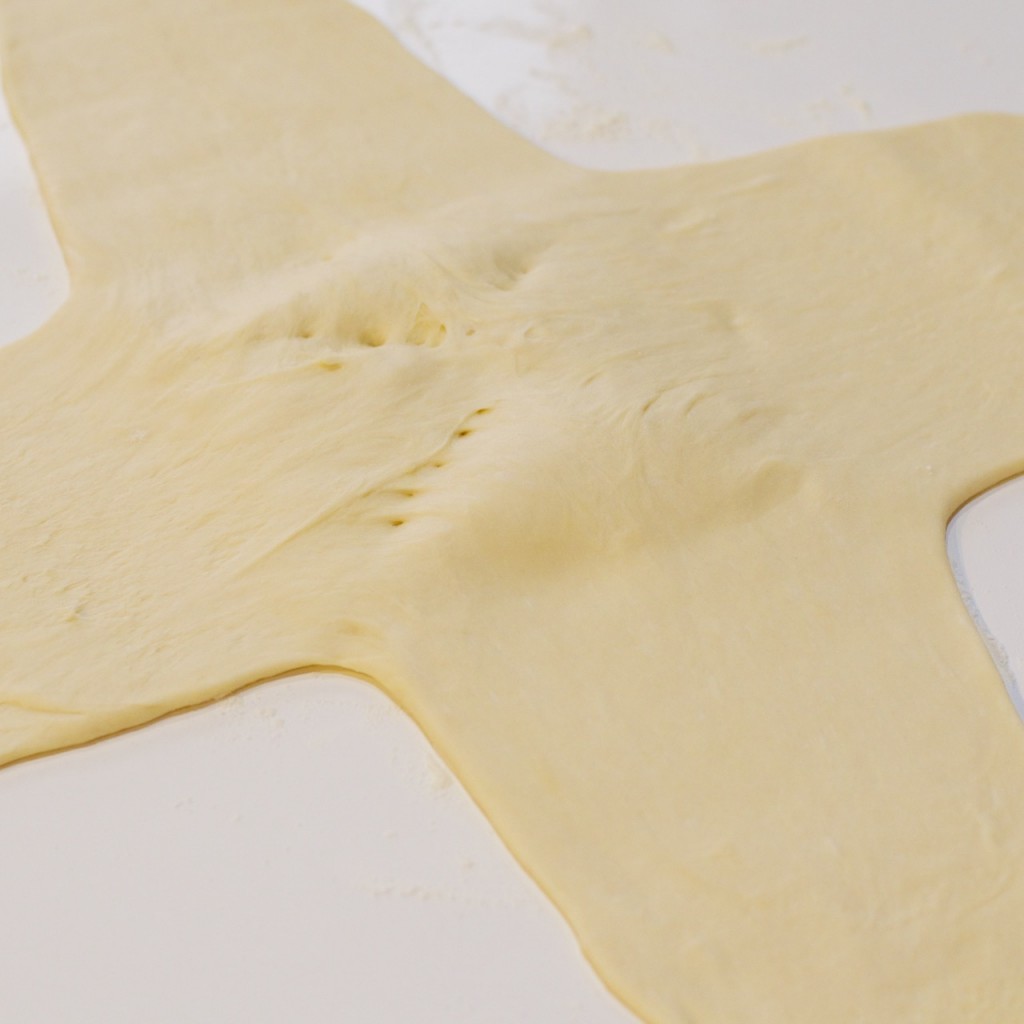
- Leave the center part THICK.
Place the square butter on the thick middle center of the dough.
Fold the stretched arms on the butter enclosing it as an envelope. Make sure no butter is exposed.
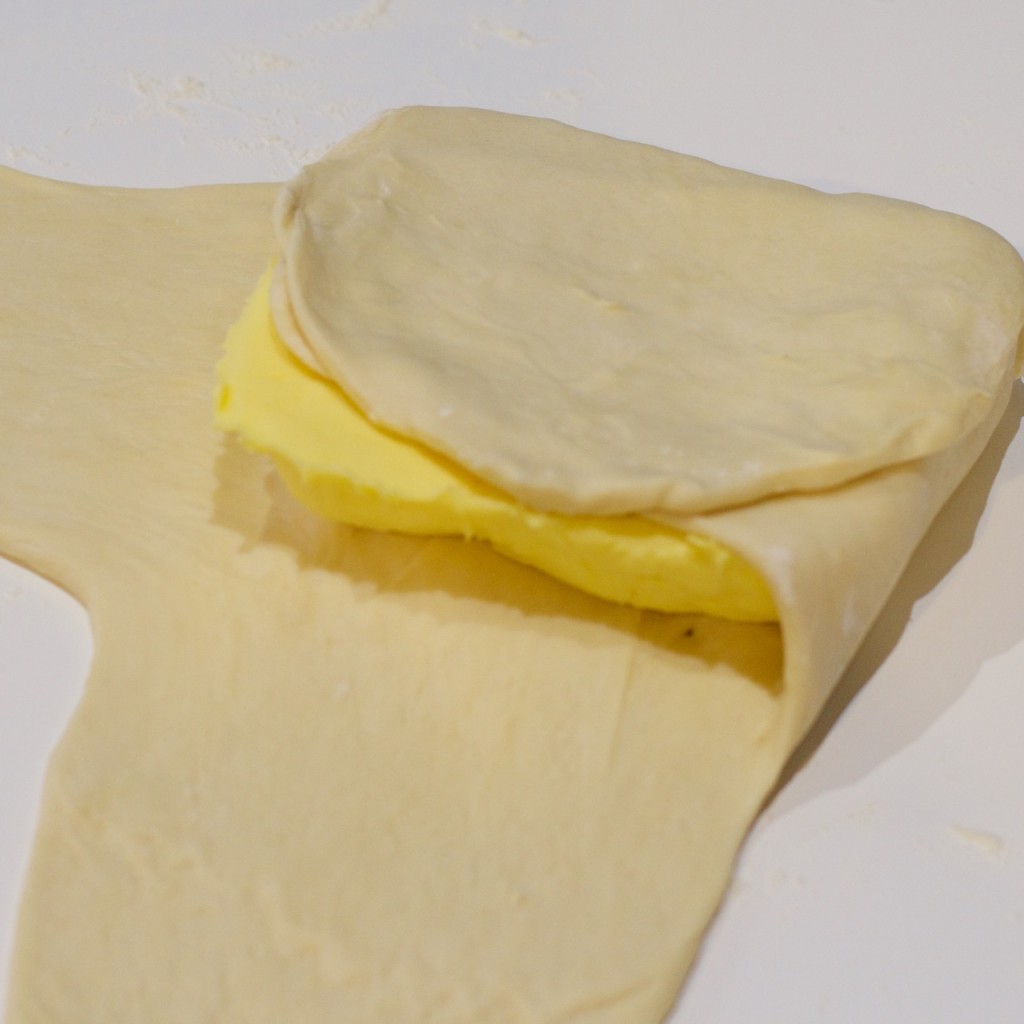
- With the help of a rolling pin, roll the dough into a rectangle, longest side facing away from you.
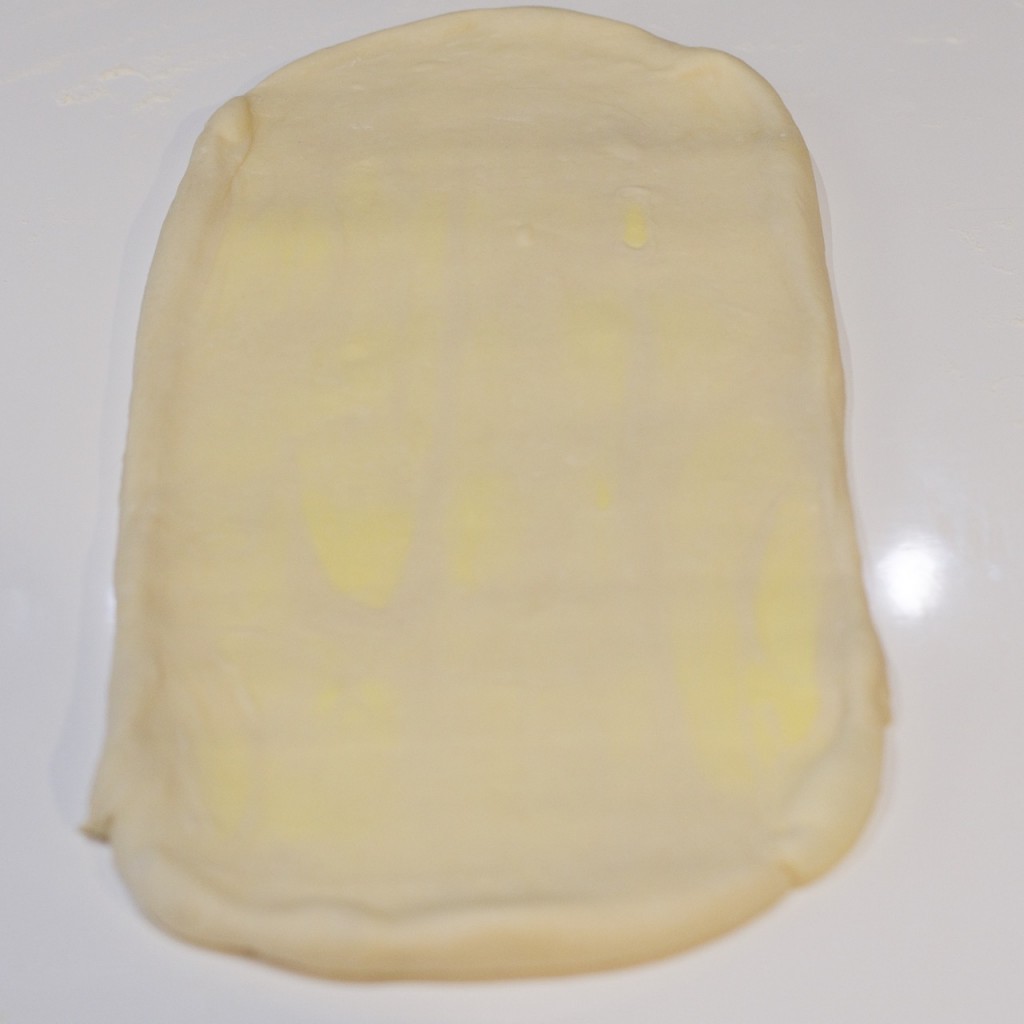
- Fold it like a book and rest in the fridge for 30 minutes.
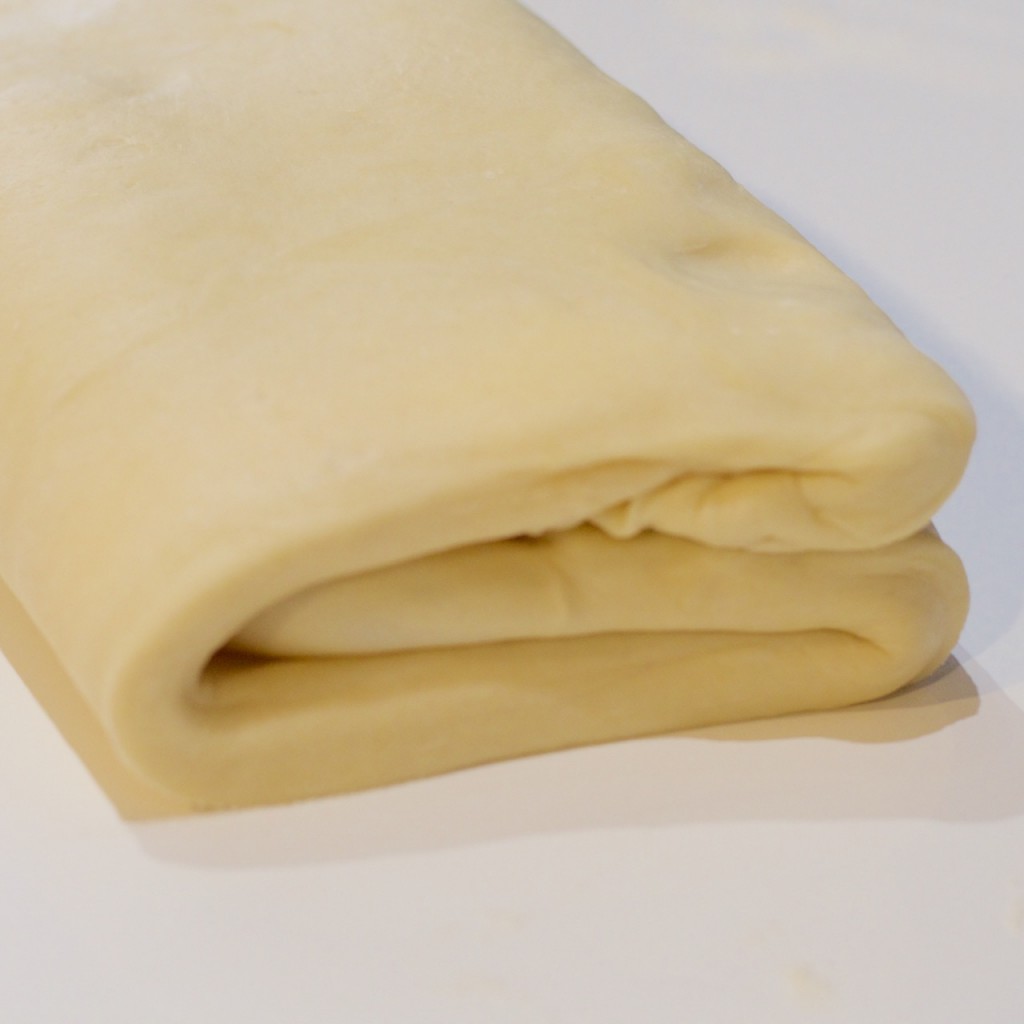
- Repeat the steps 8 and 9 twice resting the dough in the fridge for 30 minutes in between.
- Roll the pastry in a rectangle and fold in half. Rest in the fridge for 30 minutes.
- Your pastry is ready to be cut in portions and rolled out.
I cut mine in half. And used each half for different recipes.
- Cuisine: French
WordPress Recipe Plugin by ReciPress
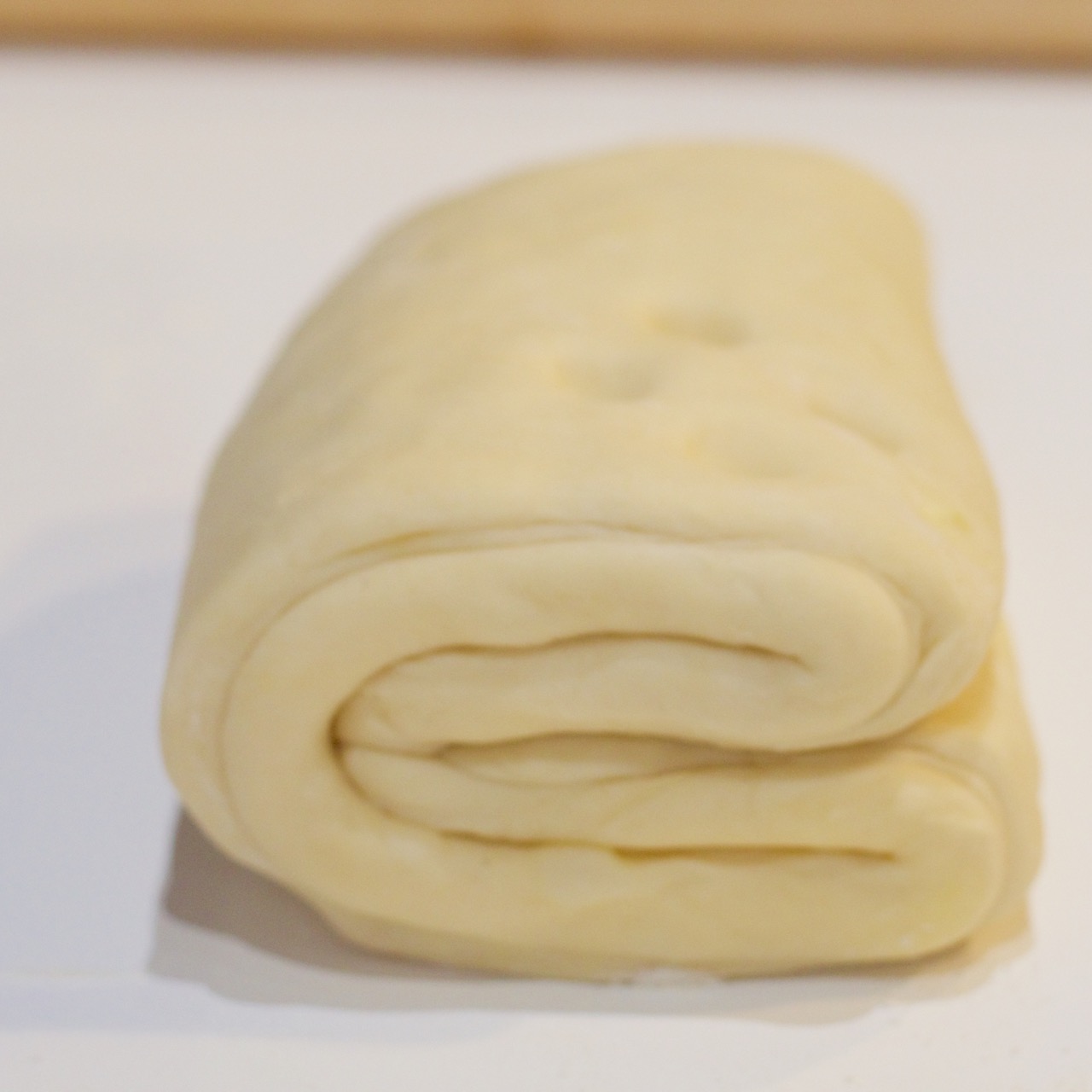
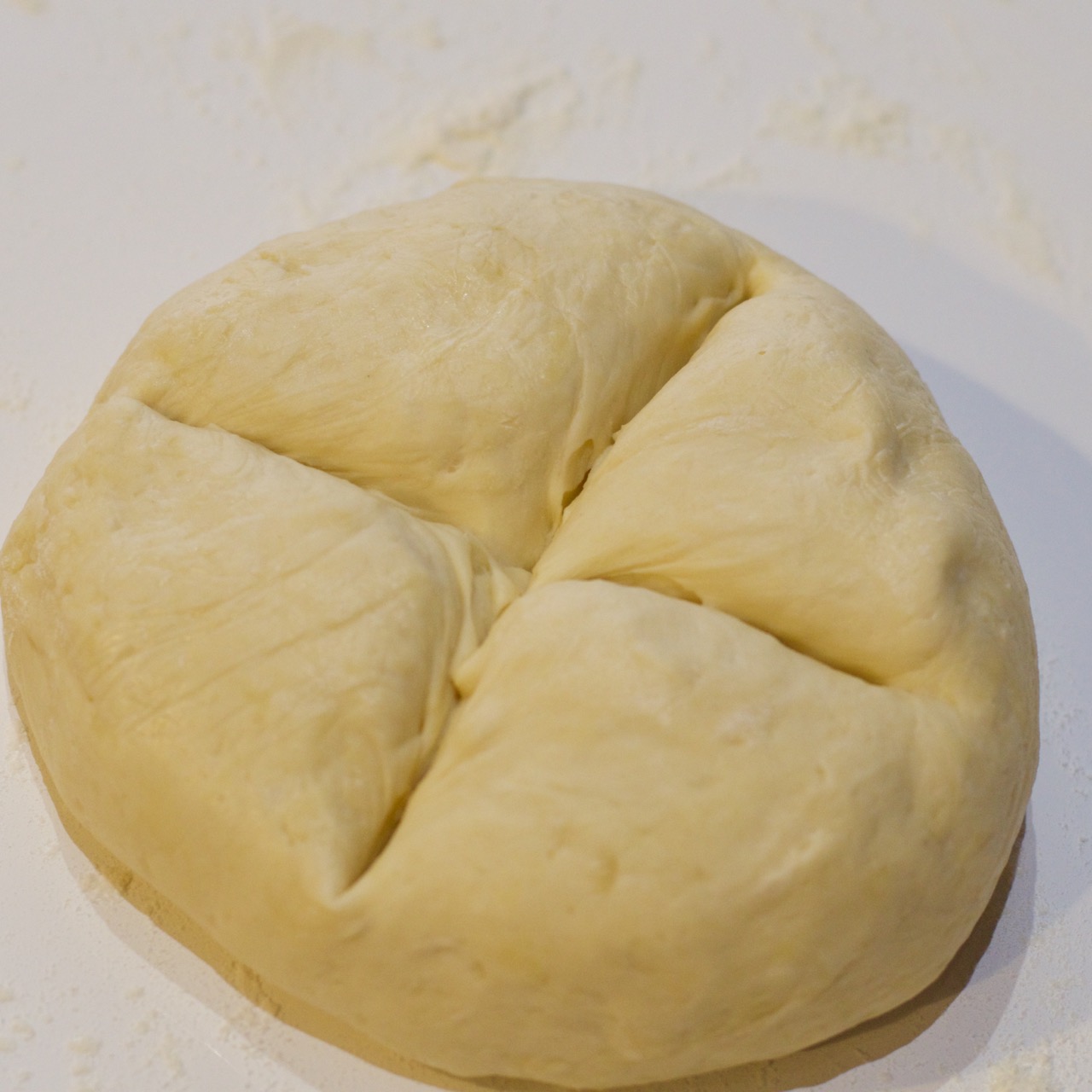
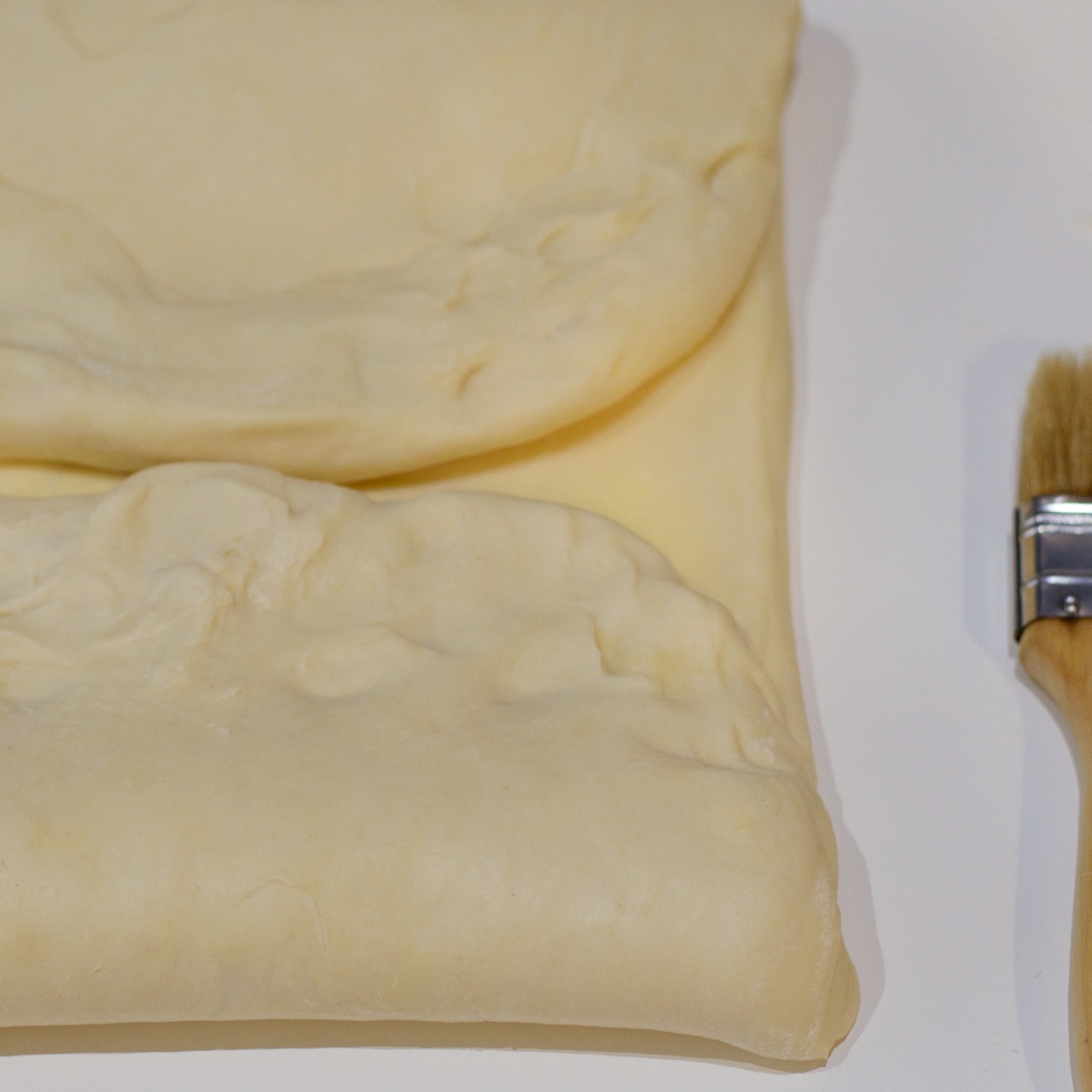
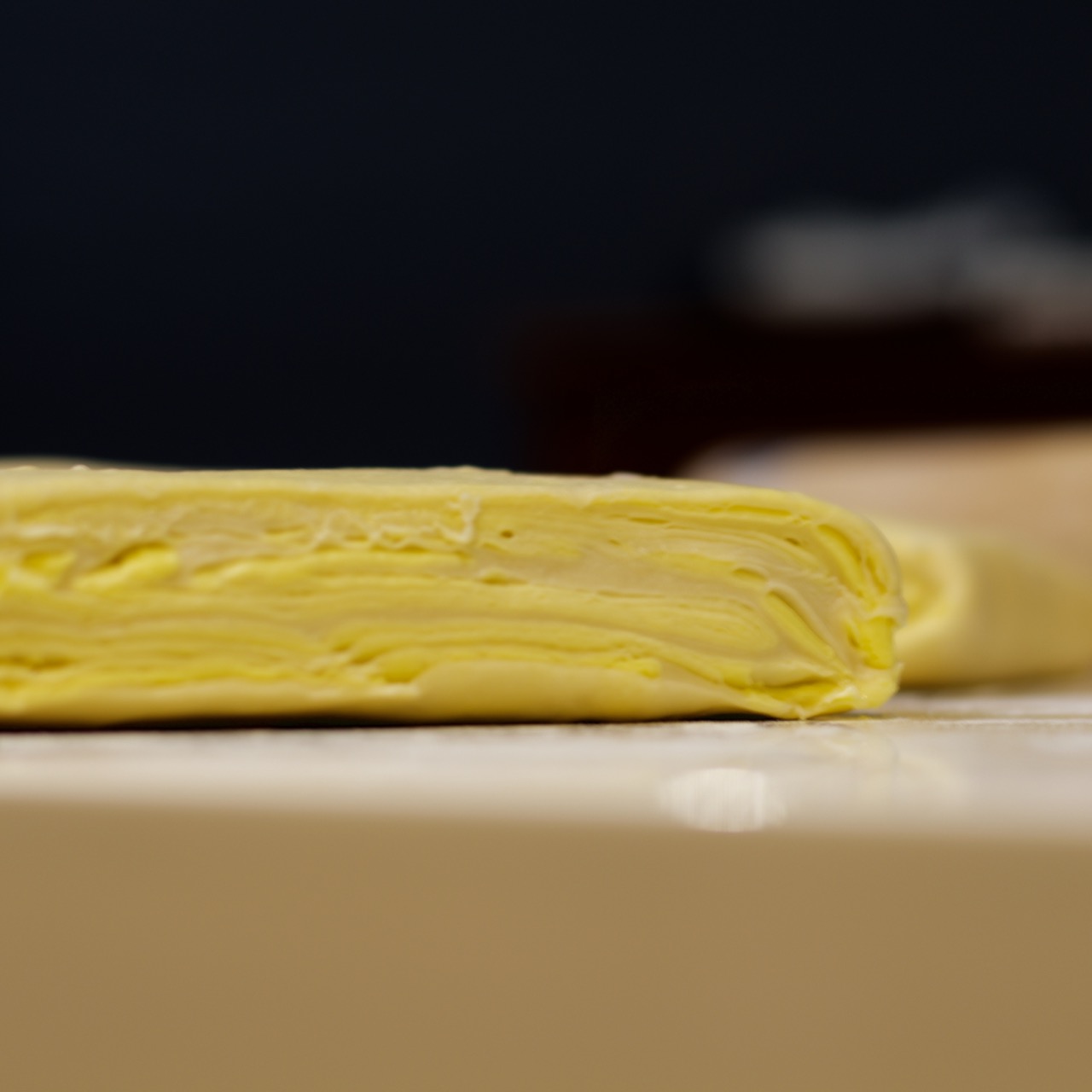







October 18, 2015 at 20:23
There is nothing like real homemade puff pastry. what a great tutorial and perfect pictures!
October 18, 2015 at 20:42
Thank you Tania 😉
October 20, 2015 at 13:53
[…] I made 1Kg of puff pastry, don’t be intimidated by this French classic. Follow my tips, recipe and method here. […]
January 29, 2016 at 09:43
Where does the lemon juice come into play?
January 29, 2016 at 10:23
Hi Randy, thanks for noticing and letting me know. The lemon juice is added to the water. I have updated the method. Cheers!